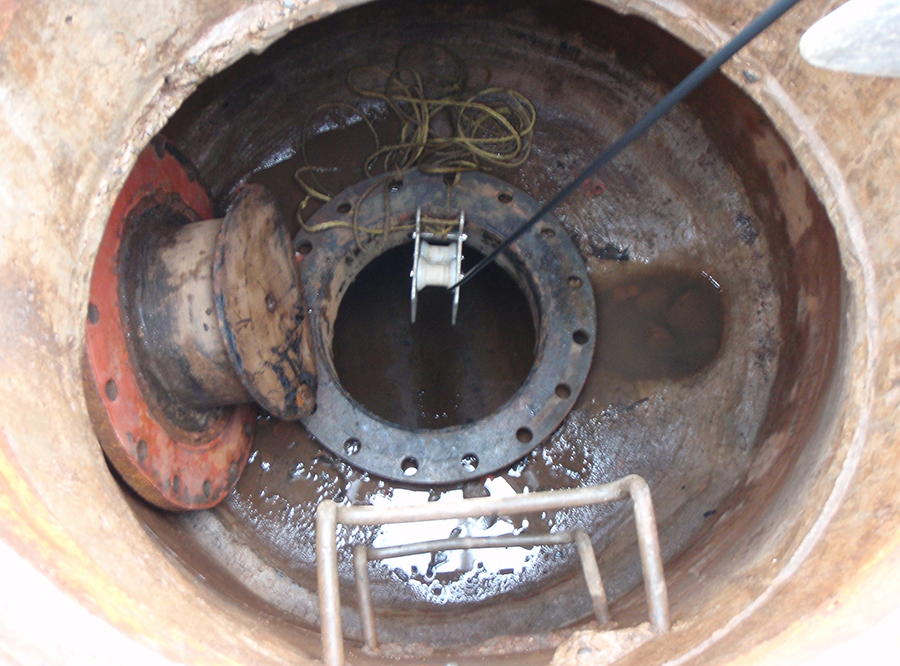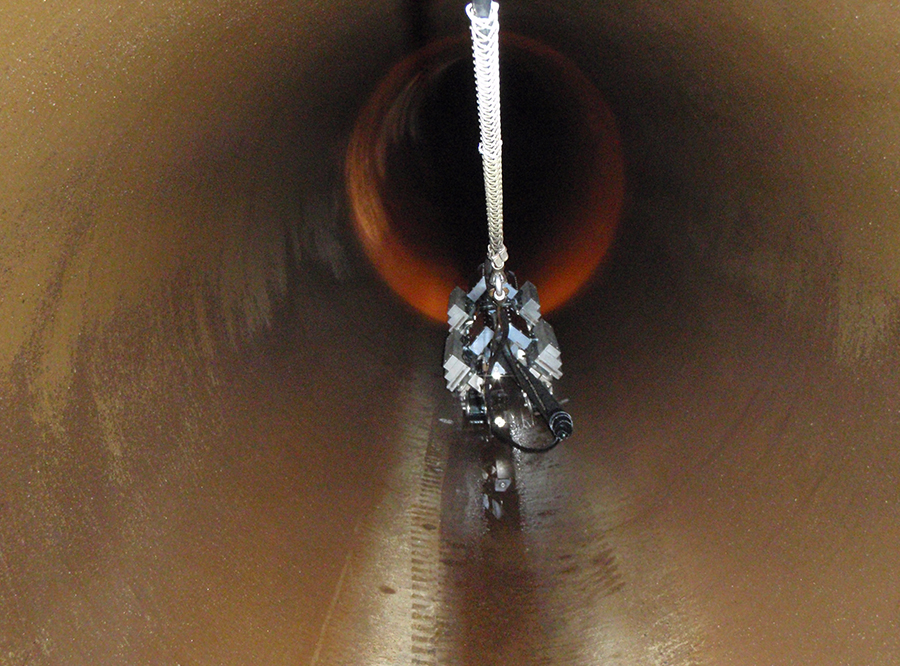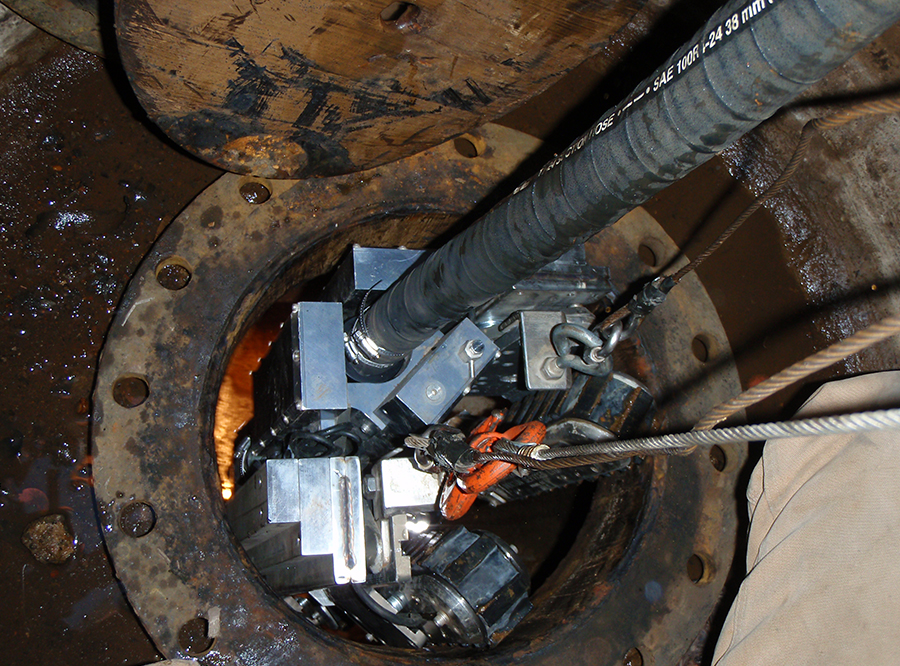Potable Water Transmission Line Inspections
Hibbard Inshore was contracted through a major engineering firm to inspect over 36,000’ of potable water transmission lines. The lines were to be inspected in a dry state to look for signs of wear and damage including cracking, offsets, holes or points of infiltration. Because of the lines operate under pressure, the access points were located far apart in some cases and the access diameters were small being that pressure flanges were the best option for access. Hibbard Inshore was able to address this situation by inspecting the lines with their Inuktun crawling vehicle (ROV) (Link) that had a 5,000’ tether installed for this job. The Hibbard crew inserted the ROV through the pressure flanges after the line was dewatered and monitored its umbilical payout to note the location of each feature of interest they identified. Hibbard Inshore planned each inspection run to consider the bends and elevation changes that may affect vehicle traction and the pipeline was entered from multiple access points.
Hibbard Inshore’s inspection revealed circumferential cracks, longitudinal cracks, small patches of scour, scouring at cracks, joints, air breaks, taps and manholes. Additional abnormalities including infiltration at joints, damaged patch areas, and missing concrete liner were also discovered. The location and video footage of all features were all given to the client in a detailed report after the project.
Hibbard Inshore’s ROVs were used in this case to inspect long stretches of pipeline that were difficult to access and had access points that were too far apart to be inspected with traditional equipment satisfying the customer’s needs to determine the condition of the entire length of the line.




